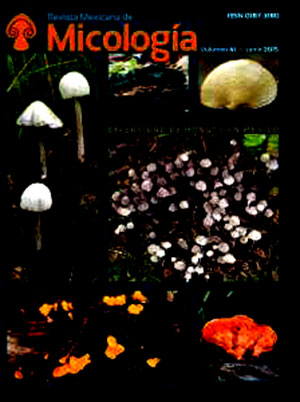Morphologic reactivation of some dermatophyte species and their susceptibility to antifungal drugs
DOI:
https://doi.org/10.33885/sf.2015.3.1136Keywords:
Iitraconazole, terbinafine, Trichophyton mentagrophytes, Trichophyton rubrumAbstract
The preservation of fungi in collections frequently induces atypical changes of the specimens. In this work, several culture media were
evaluated in order to recover the morphological characteristics of dermatophytes preserved in average for 10 years and to determine
their susceptibility pattern to nine antifungal drugs. Fifty-four isolates were studied, from them 15 primary isolates and 39 from collection,
including the ATCC 9533 Trichophyton mentagrophytes strain. The majority of the isolates correspond to T. mentagrophytes, T.
rubrum, and T. tonsurans. All dermatophytes were firstly reactivated growing them in Sabouraud dextrose agar and then cultured on five
different media containing diverse ingredients to evaluate the species morphology. For the susceptibility studies, the broth microdilution
method was used, according to instructions of the document M38-A2 (Clinical and Laboratory Standards Institute). Most of collection’
dermatophytes initially showed colonies with atypical morphology. After their growth on different media, modified Gorodkowa agar,
oat-salts agar, and soil-hair agar induced numerous conidia production. In the last one, also perforating organs were formed. Terbinafine
inhibited 85 % of dermatophyte isolates (0.0008 and 0.03 μg/mL); caspofungin and anidulafungin showed low or null activity
Downloads
Downloads
How to Cite
Issue
Section
License
Copyright notice
Open access policy
The authors who publish in this journal accept the following conditions:
In accordance with copyright laws, Scientia Fungorum recognizes and respects the authors’ moral rights, as well as the ownership of property rights, which will be transferred to the journal for dissemination in open access. Scientia Fungorum does not charge for submission and processing of articles for publication.
All the texts published by Scientia Fungorum –with no exception– are distributed under a Creative Commons License Attribution-NonCommercial-ShareAlike 4.0 International (CC BY-NC-SA 4.0), which allows third parties to use the publication as long as the work’s authorship and its first publication in this journal are mentioned.
The authors can enter into independent and additional contractual agreements for the nonexclusive distribution of the version of the article published in Scientia Fungorum (for example include it into an institutional repository or publish it in a book) as long as it is clearly and explicitly indicated that the work was published for the first time in Scientia Fungorum.
For all the above, the authors shall send the form of Letter-transfer of Property Rights for the first publication duly filled in and signed by the author(s). This form must be sent as a complementary file.
This work is licensed under a Creative Commons Attribution-NonCommercial-ShareAlike 4.0 International license (CC-By-NC-SA 4.0).



